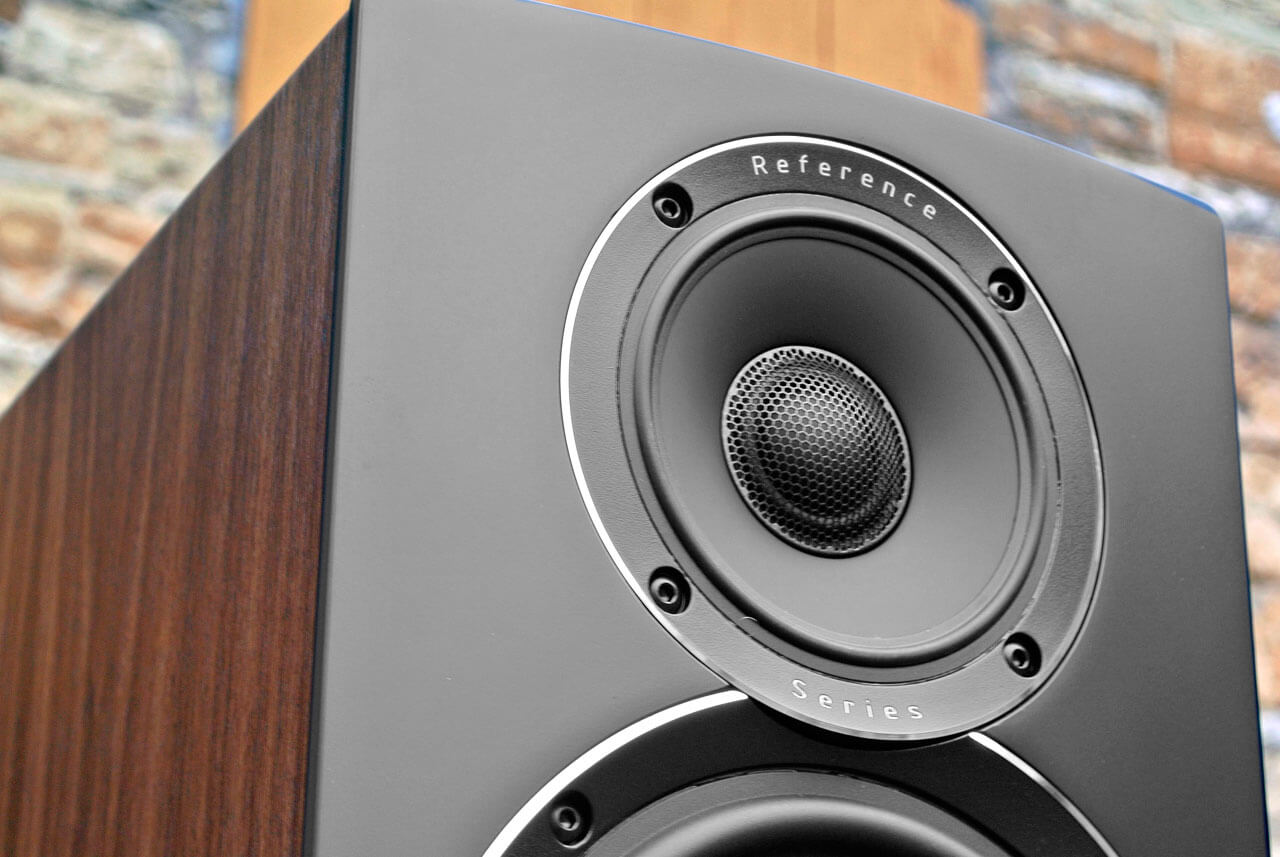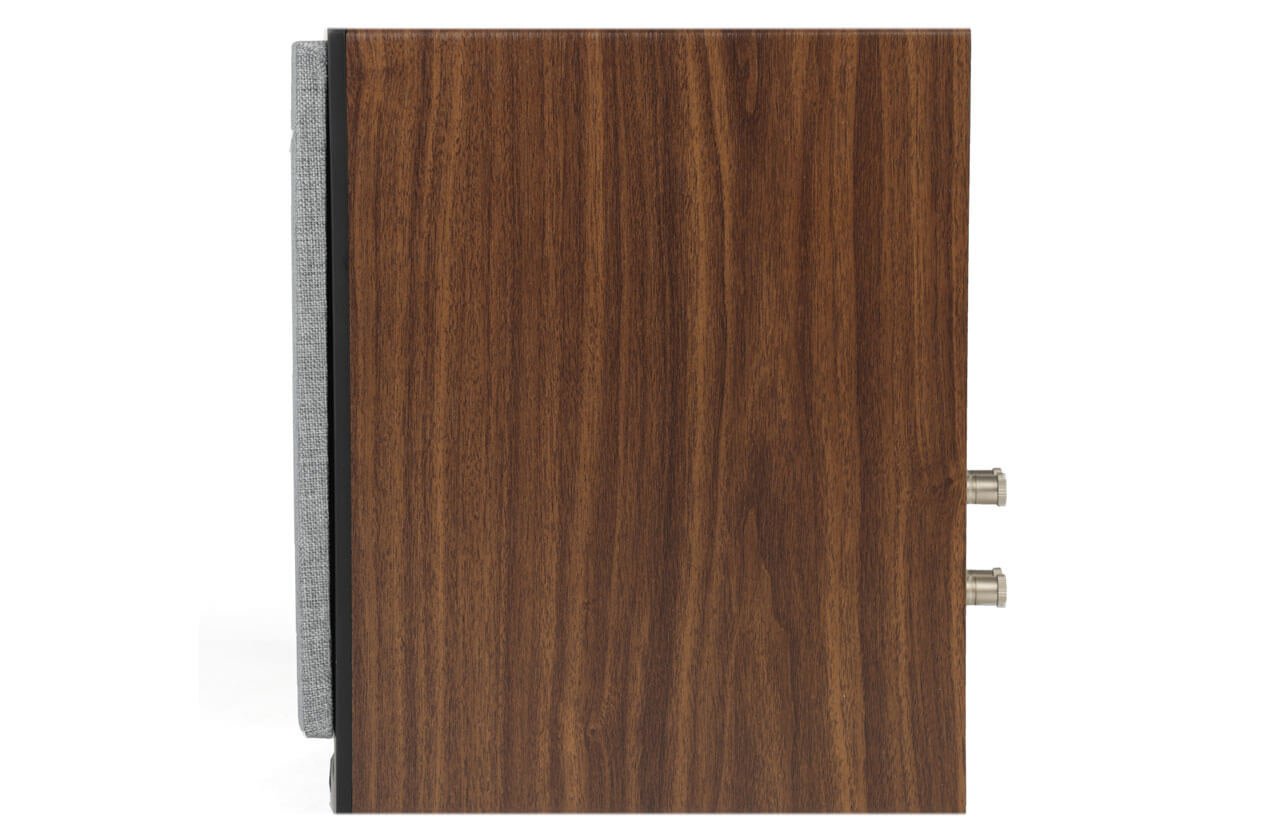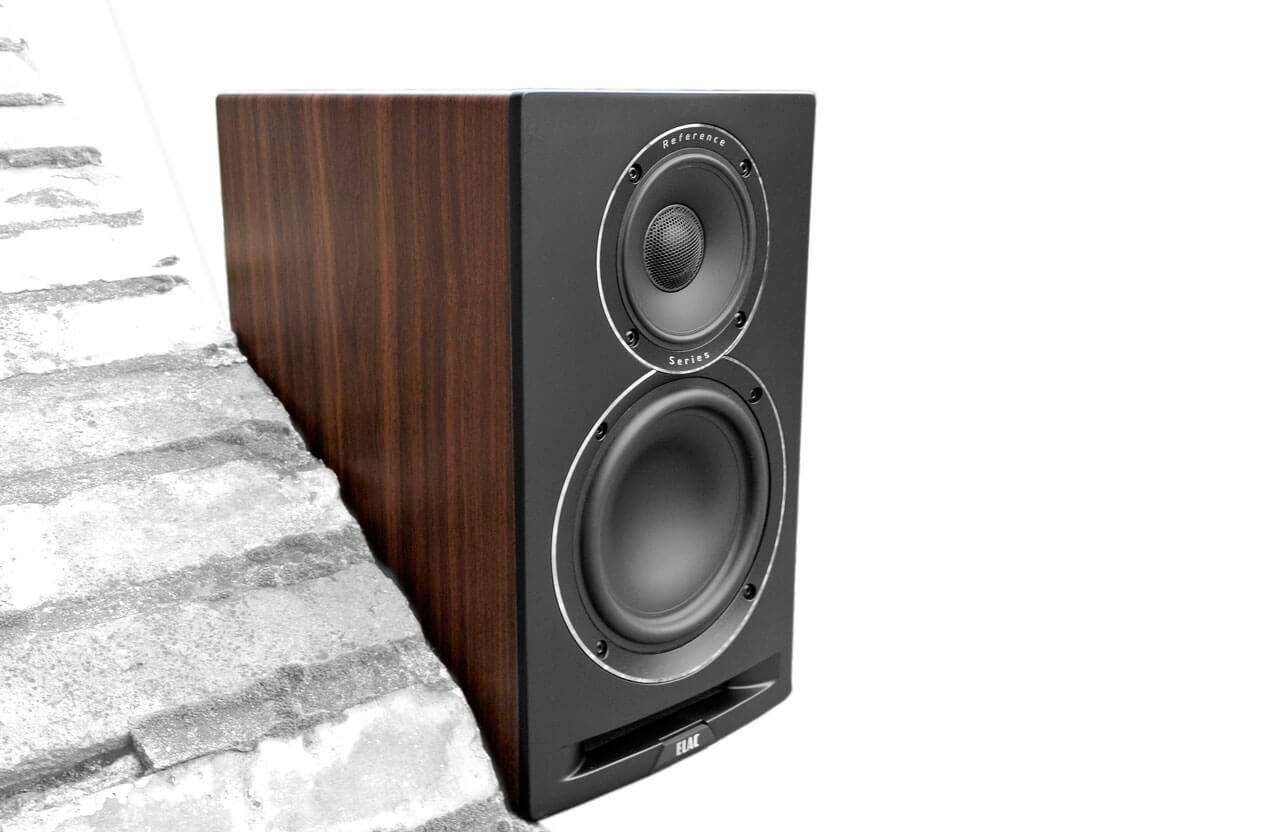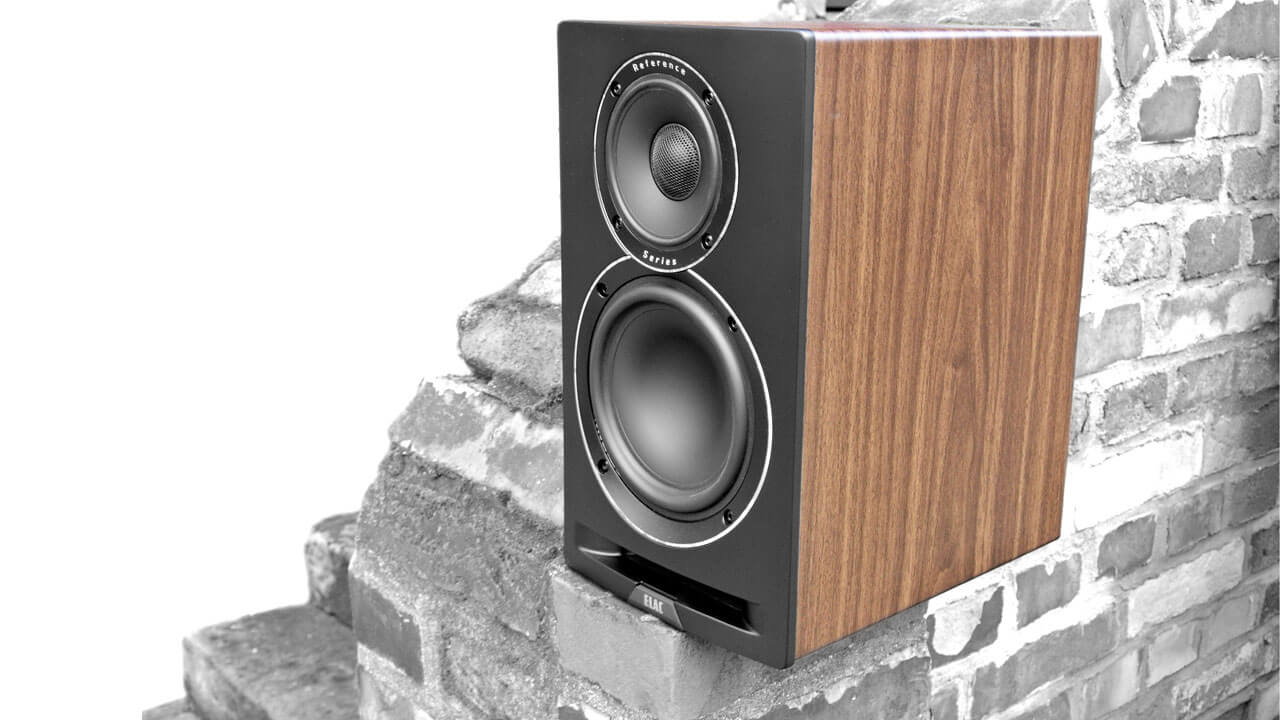I was recently chatting with a friend of mine about our job. We exchanged ideas about how we proceed with our tests: whether there are fixed rituals, processes or habits, for example. And in fact we found that we approach it rather differently: He is one of those people who first get the most comprehensive possible overview of the technology and conception in theory before he even lets the first note sound out of his “test specimen”. . It’s different for me, I’m sailing with the wind: If I have the time – and if I feel like it – I do some research before the listening course, sometimes I call the developers for a bit beforehand, but I also like to be surprised. That’s how it was with today’s subjects, the Elac Uni-Fi Reference UBR62 compact loudspeakers (849 euros |https://www.elac.com ).
The loudspeakers had been standing unpacked in the listening room for a few days because the work and unfinished projects were piling up in the general pre-Christmas stress. One evening I spontaneously had time and thought to myself: “Unpack the Elacs and play them in for a few days.” Thought, done. I lifted the loudspeakers out of the box, positioned them roughly aligned on stands, put on music – and was spontaneously hooked: “Wow, they sound really good, straight out of the box.” A closer look at the housing: classic , quality design, clean workmanship. A look at the box: there was the word “Reference”. After half an hour of satisfied first sniffing and looking at my (as I thought) mature experience as a tester, I appraised the loudspeakers at a pair price of a lazy 1,500 euros. Later, on the computer, I realized: I had gotten pretty wrong, the pair cost “only” 849 euros. I was quite amazed. But now from the beginning, as it should be.

The Elac Uni-Fi product line has been around since 2017. It traditionally consists of a floorstanding speaker, a center and a compact model. In 2019 it was revised as Uni-Fi 2.0 – and the Uni-Fi Reference series now represents the third evolutionary stage. If you look at the loudspeakers, you can already follow the development process by looking at them. While the representatives of the first two series still came in the classic, right-angled “box format”, the Uni-Fi Reference series seems much more ambitious: Not only are the corners of the housing now gently rounded, the baffle is also slightly curved, towards the edges, so to speak fleeing. And instead of a classic round bass reflex tunnel, the Elac Uni-Fi Reference loudspeakers come with a front horizontal flow channel in the form of a slit, which is also rounded on both sides. The rest is done by the cleanly executed wood look, which gives the loudspeaker a decidedly mature, sophisticated and timeless appearance.
More ways than you think…
Oh yes: at first careless glance at the compact Elac Uni-Fi Reference UBR62, one might think that it is a completely conventional two-way concept, as is customary in the size and price range.
But – far from it! The low-frequency range is covered by a 165 mm driver with an aluminum membrane, which only plays up to 240 Hertz. For the mid-high range, Elac has actually given the UBR62 a coaxial system, consisting of a 100 mm aluminum mid-range driver and a 25 mm fabric dome placed in its center, which takes over from 1800 Hertz and from a few meters viewing distance from the optics too could pass as a dust cap. So the little Elac Uni-Fi Reference UBR62 is a three-way speaker !

An amazing effort given the price. Rolf Janke, Head of Development at Elac, explains why: With the coaxial system, it is much easier to achieve the declared goal of approaching a point sound source and also more easily ensure an even frequency response in the direct and diffuse sound field. Of course, this also requires more effort for the crossovers in order to get a “correct” phase position in the transition area. According to Janke, however, this effort is rewarded by a coherent, “mature” sound. The woofer was deliberately decoupled at a low level, thus essentially creating a “subwoofer satellite system” in a single housing.

If you approach this procedure from an accountant’s point of view, you could possibly break out in a sweat. My first thought was: If you have to “build” three drivers or a more complex coaxial system instead of two drivers for a certain budget and then consider the additional effort for the crossover: Couldn’t it make more sense to use the (supposedly) simpler two-way system -path and spend a little more money on the drivers themselves? Well, what is decisive is what “comes out at the back” or in this case at the front. And let’s listen to that now.
Elac Uni-Fi Reference UBR62: Sound Test & Comparisons
I think the Elacs have been assigned attractive teammates so that they can develop as best they can. The source devices were my CEC CD5 CD player and the Hifi-Akademie stream6-mini , the Tsakiridis Alexander took care of the pre-amplification, and the Valvet A4MK2 monoblocks acted as the output stage. Let’s first look at the tonal:
Bass, mids and treble
Let’s start with a classic matter of course: deep and sub-bass, which massages the intestines, can’t come from a compact 15-liter volume. Physically not possible. But you don’t always want that. In smaller listening rooms, the visceral massage is often “paid for” with a certain risk of booming and other room- acoustic difficulties. I set up the Elac Uni-Fi Reference UBR62 in my small listening room (15 m²) – and there they bring just the right amount of bass with you, where you don’t miss anything towards the basement. If you listen to Alt-J in her track “Fitzpleasure” (Album: An Awesome Wave,) go into the instrumental bridge after the first verse, the bass and bass drum blow you away quite properly, but the playback remains free of thrumming and slobbering, which is a good thing. Sub-basses, such as the sub-octave-coupled electric bass in the song “Cedars of Lebanon” by U2 (album: No Line On The Horizon), are only hinted at.

It is all the more pleasing, however, that both the transition to the midrange and the treble are seamless in a way that is almost sensational when you look at the price tag. And: in terms of resolution and frequency response linearity, the middle and high-frequency ranges appear mature to a degree that one should not generally expect at a pair price of well under 1,000 euros. Here the Elac developers have succeeded in achieving an astonishing balance. For example, the B&W 606 S2 (749 euros) looks a bit more analytical, primarily due to its above-average treble illumination for the price range, while a Fyne Audio F1-5 (3,799 euros, unfair comparison in terms of price, that’s clear, but similar volume and also equipped with a coax) is noticeably warmer and almost has a “list” of sonorous/euphonic sounds.
Anyone who thinks that “balance” is a euphemism for boredom or an audiophile compromise is wrong: the Elac Uni-Fi Reference UBR62 simply sound mature, mature, transparent, clear, clean. In view of the price range, the mid-range speaker brings an amazing depth of detail, the tweeter is clean, but fades out a little earlier in the super high tone than, for example, the B&W box mentioned above, but without spontaneously missing anything here. For example, the instrumental ballad “Tenderly” by Dennis Marcellino and Mark Stefani (Album: Tenderly), in which only saxophone and clean electric guitar lament together, can be enjoyed exceptionally well.

The saxophone in particular is a tough touchstone for a hi-fi chain (and for the recording sound engineer as well). The instrument is moved back and forth a lot when playing, there are a variety of background noises (breathing, air, “clattering of the keys”) – it can quickly sound unnatural, nasal, at times. Or the background noises come into focus, which can happen quickly with loudspeakers with a certain cheekiness in the high-frequency range. Nothing like that about the UBR62, it just sounds authentic and good here. The same applies to other acoustic instruments and voices.
dynamics
Funny how life sometimes goes. As far as the dynamics are concerned, I could in principle write here pretty much exactly what I recently wrote about the nano (Joachim Gerhard Collection). In the low-frequency range, as I have already indicated, the Elac boxes are not excessive, there are loudspeakers in this price and size class that mobilize reserves more quickly and/or shovel more energy into the room, for example the Nubert nuBoxx B-40 (556 euros) – but also the small, considerably more expensive ProAc Response DB1 (3,100 euros). But already from the lower mid-range, the Elac Uni-Fi Reference UBR62 up to the high-frequency range dynamically and in terms of timing and speed. It’s a sheer delight to hear impulsive instruments or bodies with her, like the synthetic hi-hat on Notwist’s “This Room” or the lengthy, attacking, ultra-precise tom-tom thunderstorm on Alt-J’s track “Fitzpleasure.” The little people from Kiel really don’t waste anything here: This is not only a mature achievement in view of the price tag.
Overall – especially due to the somewhat milder bass in terms of coarse dynamics – the sound does not appear “jumping” or annoying in a negative sense. The Elac Uni-Fi Reference UBR62 does not sound reserved or laid-back, but (I have to say it again): “grown up” – in the sense of mature and not in the sense of an older gentleman who will soon have to order a stair lift.
stage + space
Curtain up. Now comes the discipline that I enjoy the most with the Elac Uni-Fi Reference UBR62, because it’s my favorite discipline anyway: the stage presentation. Anyone who reads my reports at fairaudio more often knows that I listen to music so that I can immerse myself in another world. In my spare time, I would always prefer a component or a loudspeaker that wants to take me to the other side of the magic mirror to an overly analytical device. (Of course it’s different if I had to master a piece in the studio, because I want to hear “Furz und Feuerstein”).

And what the Elac UBR62 can do really well is a wide and above-average stage design, in which the loudspeakers completely “dissolve into thin air”. Play music with a wide, deep stage – for example Radiohead ‘s “How to Disappear Completely” (album: Kid A) or Dire Straits “Love over Gold” (album of the same name) and lead a blindfolded stranger into the room. It shouldn’t be able to accurately locate the position of the Elac speakers. It may, it shouldalmost bathed in music, whereby the effect of the wide and deep stage is more pronounced than the ability to localize the sound sources down to the last millimeter like a drawing board. When set up correctly, the small Elac allow a really deep look into what is happening, almost as if the rear wall of the room had become permeable, spectacular. Albeit with a small “but”: The stage starts on the base line or even just behind it. So the Elac Uni-Fi Reference UBR62 definitely don’t play forward, but rather in the opposite direction. If you want to be “tackled” to the front, you may not get your money’s worth here. Everyone else is allowed to look all the more deeply into the room, or rather: hear.
Elac Uni-Fi Reference UBR62 – Comparisons with other speakers
Of course, “a little something” is still possible, especially if you have more money in hand. I know loudspeakers that “jump” you even more or deliver more substance and/or fine resolution, especially at the end of the frequency response. This is the case, for example, with my ProAc D20R (4,500 euros), here there is contoured, fast and abysmal bass “full”, but also more details in the treble range without it becoming cheeky. An in tune Ayers Two (1,660 euros) is also much more advanced in the bass range. In terms of resolution in the mid-band, however, the Elac Uni-Fi Reference UBR62 has the edge. In terms of spatial representation, the Inklang Ayers Two approaches the listener a bit in this regard and also comes with a slightly better localization sharpness, while the Elac plays a little backwards and is not exactly structured in the drawing board manner.
And if we stay in the price range again: The Heco Celan Revolution (999 euros) is almost a kind of alternative to the Elac UBR62, because it comes with an extra shot of fine resolution, but also presence in the high-frequency range, is dynamically a little more there and plays more overall “In your face”, which can be absolutely fun, but then just doesn’t radiate the maturity, balance and conclusive calmness that emanate from the Elac Uni-Fi Reference UBR62. The already mentioned Nubert nuBoxx B-40, on the other hand, delivers more and also a more contoured bass, but in comparison a somewhat more limited, not so coherent stage design.
Conclusion: Elac Uni-Fi Reference UBR62
The longer I listen to the Elac Uni-Fi Reference UBR62, the more I admire the developers’ art of tuning. Because: It is relatively easy to give a speaker a certain character – for example by more or less gently emphasizing a certain frequency range or a stronger focus on a certain virtue. The 62s are stored differently: In hardly any discipline do they lean out of the window unduly. They play tonally neutral, but never appear dull in terms of tone color. They are dynamically so good that they create listening fun and involvement for me, and don’t seem the bean strenuous or even annoying. They are also able to create a lot of atmosphere through their broad and deep stage presentation without overdoing it in terms of opulence. Their ideal habitat should be a not too large listening room of up to 20 square meters, in which a broad music portfolio should sound mature, authentic and mature. It is gratifying that all this is possible without annoying compromises or the feeling of an outstanding compromise for significantly less than 1,000 euros. And anything but a matter of course.
Elac Uni-Fi Reference UBR62 profile:
- Sophisticated and balanced in the best sense of the word:
– Of course there is no sub-bass, but otherwise an authentic and coherent low-frequency range that has enough pressure and depth for small rooms.
– The midrange and treble range play extraordinarily coherently with the coax team. Fine resolution and balanced neutrality are located well above the price range, neither in the direction of analysis nor in the direction of euphony are there any hits.
– All the way up – keyword super high tone – it’s rather softened. Other loudspeakers / tweeter concepts can do even more. - The rough dynamics depend to a certain extent on the frequency range: A bit restrained at the bottom, the UBR62 can get started well and quickly in the range from the deep mids upwards. Wall-of-sound with guitars, but also drums come with power and precision without “screaming”.
- Fine and micro dynamics are better than the class average. This is particularly noticeable with instruments or playing techniques that generate background noise. However, these sounds are never out of the ordinary, they only add to the authenticity.
- Wide and deep stage, going a bit far beyond the “pure teaching”, but with a lot of atmosphere – quite impressive, but not gimmicky. The localization sharpness is typical of the price range. In addition, the speakers tend to play backwards rather than forwards, so the stage starts at or just behind the baseline.
- Clean processing, timeless look.
Facts:
- Model: Elac Uni-Fi Reference UBR62
- Category: passive three-way bass reflex compact speaker
- Price: 849 euros
- Nominal Impedance: 6 ohms
- Efficiency: 85dB/2.83V/1m
- Dimensions & weight per piece: 20.8 x 35.9 x 33.4 cm (body, WxHxD), 10.7 kg
- Colours: Matt white with oak sides or, like the test model, matt black with walnut sides
- Guarantee: 5 years








Add Comment